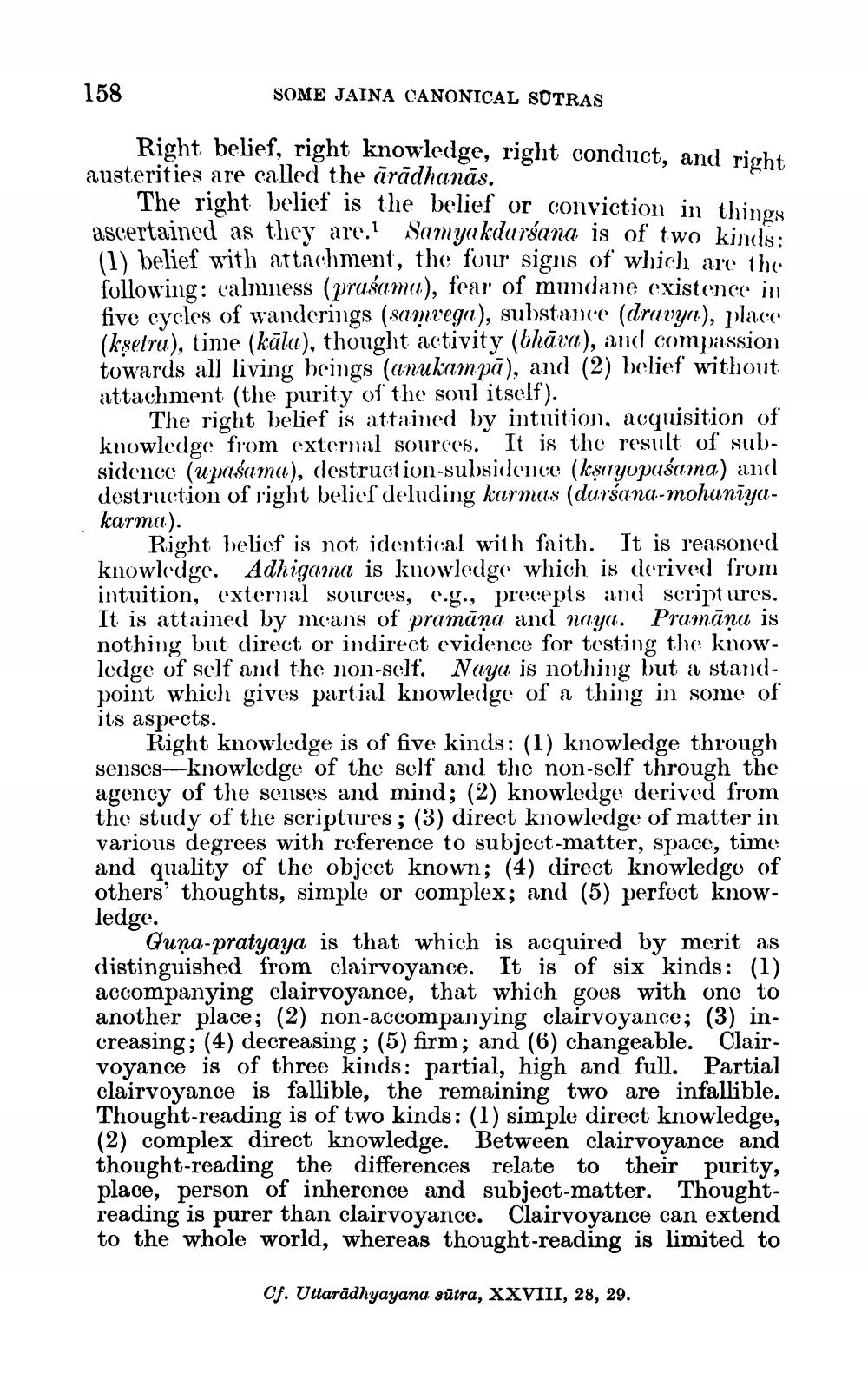________________
158
SOME JAINA CANONICAL SOTRAS
Right belief, right knowledge, right conduct, and right austerities are called the ārādhanās.
The right belief is the belief or conviction in things ascertained as they are.1 Samyakduršana is of two kinds: (1) belief with attachment, the four signs of which are the following: calmness (prusamu), fear of mundane existence in five cycles of wanderings (samvega), substance (dravyn), place (kşetra), time (kāla), thought activity (bhāva), and compassion towards all living beings (anukampā), and (2) belief without attachment (the purity of the soul itself).
The right belief is attained by intuition, acquisition of knowledge from external sources. It is the result of subsidence (upaśama), destruction-subsidence (kşayopuśama) and destruction of right belief deluding karmas (durśana-mohuniyakarma).
Right belief is not identical with faith. It is reasoned knowledge. Adhigama is kuowledge which is derived from intuition, external sources, (.g., precepts and scriptures. It is attained by means of pramāņa and naya. Pramāņu is nothing but direct or indirect evidence for testing the knowledge of self and the non-self. Nayu is nothing but a standpoint which gives partial knowledge of a thing in some of its aspects.
Right knowledge is of five kinds: (1) knowledge through senses-knowledge of the self and the non-self through the agency of the senses and mind; (2) knowledge derived from the study of the scriptures; (3) direct knowledge of matter in various degrees with reference to subject-matter, space, time and quality of the object known; (4) direct knowledgo of others' thoughts, simple or complex; and (5) perfoct knowledge.
Guņa-pratyaya is that which is acquired by merit as distinguished from clairvoyance. It is of six kinds: (1) accompanying clairvoyance, that which goes with one to another place; (2) non-accompanying clairvoyance; (3) increasing; (4) decreasing ; (5) firm; and (6) changeable. Clairvoyance is of three kinds: partial, high and full. Partial clairvoyance is fallible, the remaining two are infallible. Thought-reading is of two kinds: (1) simple direct knowledge, (2) complex direct knowledge. Between clairvoyance and thought-reading the differences relate to their purity, place, person of inherence and subject-matter. Thoughtreading is purer than clairvoyance. Clairvoyance can extend to the whole world, whereas thought-reading is limited to
Cf. Uttarādhyayana sūtra, XXVIII, 28, 29.




